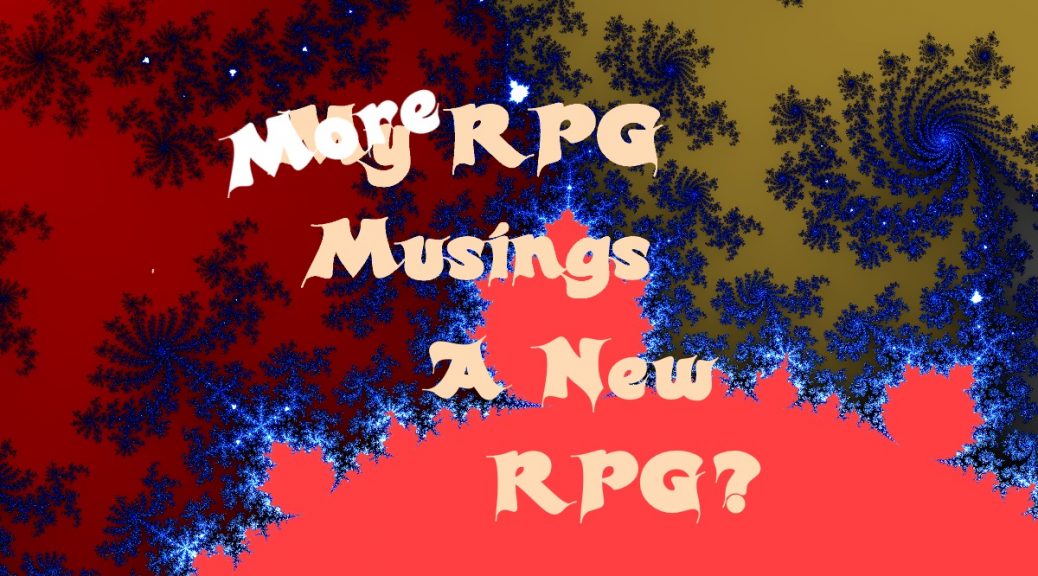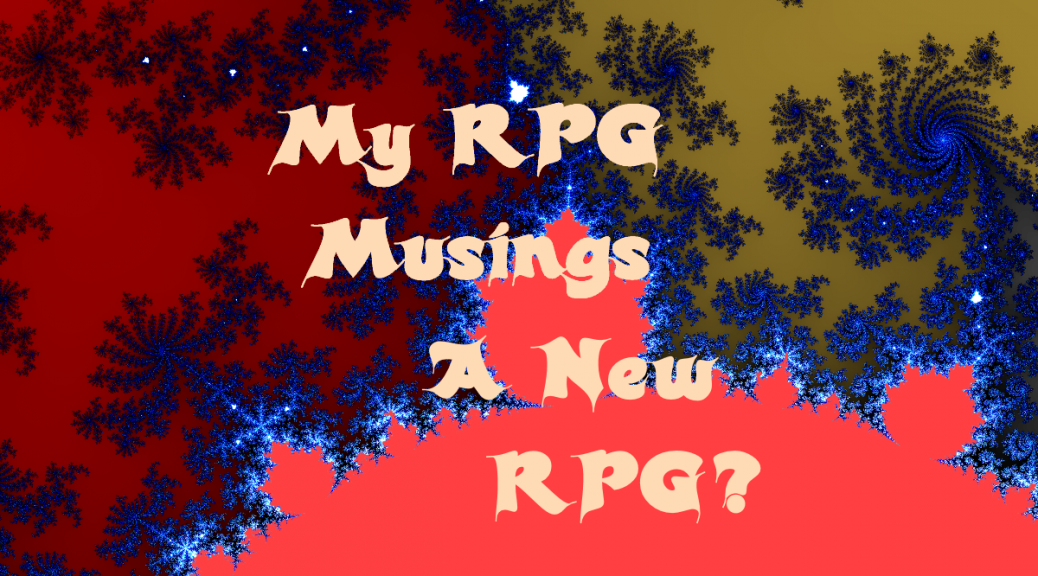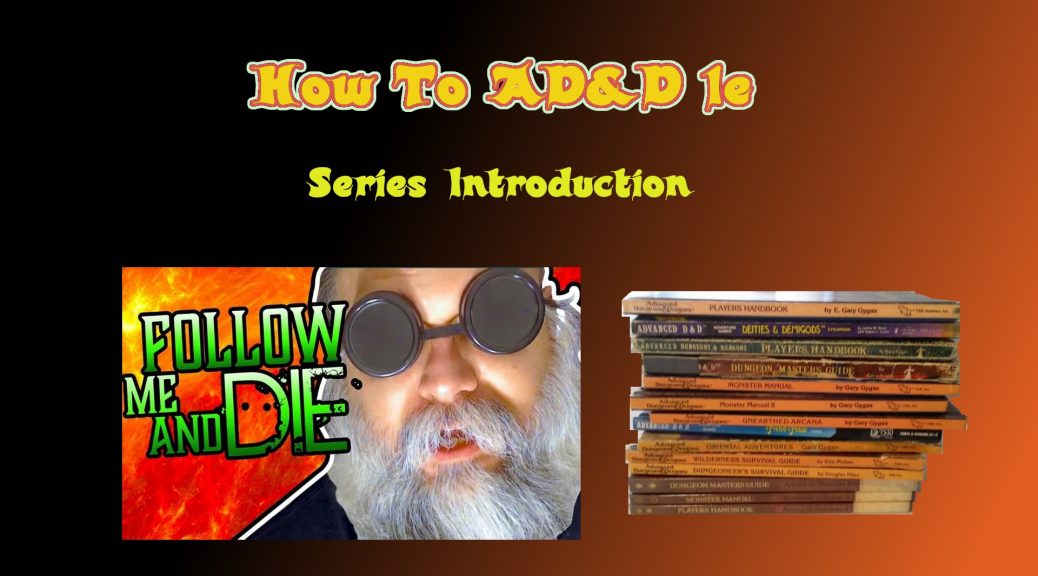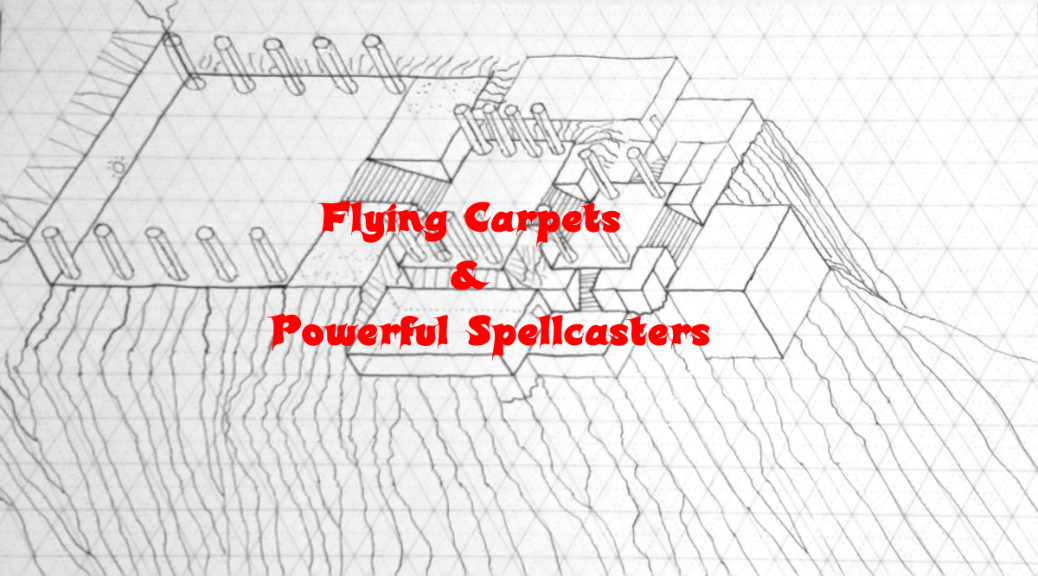Like many in the RPG/OSR space, I have dreams of making my own RPG, but the key is to come up with something different. For me, how to avoid being yet another clone is the issue.
So far, I don’t have a specific coherent system, just lists of potential ideas.
At one point I was musing about making my own western RPG, but there are several and a few new ones in the past few months. Instead, I think I will focus on a western campaign setting or campaign planning book or guide.
My idea is for simplicity and I have two “paths” in mind. One is a level less system, where all the trappings of leveling up don’t happen. I have vague ideas for how to implement it so that some aspects improve, but not to the degree it does in other games.
The other is a change to the level progression. I imagine a standard base amount of XP to level, but to have more options, like using magic takes even more XP to level. The more bells and whistles you add to your character, the more XP it takes to level. Of course, that will require defining the things that increase XP and the perpetual problem of not thinking of something that some can argue is essential. So a framework for adding new things. Not so simple once you drill down.
I think my level less idea is simpler and more workable than a complex way to track XP. I suppose some might like a more complex option, but it sure doesn’t sound fun to design and write up.
The Level Less Ideas So Far
This takes advantage/disadvantage for some elements from 5e, and the usage die from Black Hack, and adds in my own twist for combat. Magic is not well thought out, and sounds like systems I have heard about, but never played. The major thing to keep in mind, these are all ideas at this point, as nothing has been play tested.
I want combat to definitely be risky and life or death to be determined quickly. My thoughts are a base d6 for HP and a high CON will get you 1 or 2 extra “real” HP. A high DEX will get you 1 or 2 “dodge” HP. Warrior types, who are trained in fighting, in a fantasy setting, fighters, paladins, rangers, monks, and perhaps clerics, will get 1 or two extra “martial” HP.
The DEX based and “martial” HP would each be reduced by 1 from the flank, and negated from behind. Perhaps only negated from behind if surprised. Only the CON based extra HP are real and flanking has no effect on them.
You could allow players to choose the average base HP or take a chance and roll. They have to live with their choice. Average on a d6 id 3.5. GM can decide to roll up to 4 or roll down to 3. GM should announce before characters choose, as the odds of rolling a 4 or better is just over 50%. Rolling more than 4 is less likely. Or you could give them a minimum of 3 if they roll a 1 or 2.
Weapons Damage
All weapons roll 1d8 to determine damage:
1-2 = Cut/nick, bruise. 10 = 1 actual HP (Track with Tick Marks?)
3-4 = Glancing Blow 1 HP
5 = Solid Hit 2 HP
6 = Wound 3 HP
7 = Severe wound 5 HP
8 = Mortal Blow 6 HP*
*Martial Hit Points and Dodge Hit Points help here. Rear attacks are fatal unless have extra HP from a high CON.
Bound or immobile opponents can be slain automatically.
Larger or smaller base hit die for monsters is one way to handle it, and some might take more than one 8 on a d8 to be slain, if they can be hit by the weapons available to the players. Another option would be to set a usage die for the creature and every time they roll 6 or more check the usage die. The mortal blow could require rolling the usage die twice.
This suits multiple genres, as you don’t have to figure out how to bolt on firearms or plasma guns. It could easily be abstracted to siege engines verses a section of city wall, or galleys vs ramming galleys, sailing ships, and space ships.
Saving Throws: Roll under appropriate skill.
Magic: Roll under either INT or WIS to cast
Physical Damage: Roll under DEX to dodge. Roll under CON to resist.
Spell Casting
I’m thinking the average of a caster’s INT & WIS to start for their Power Points, or whatever I decide to call them. Those could represent their “mana pool” and as long as they can cover the cost of a spell that they know they can cast it. The key is to determine how these increase, and new spells become known.
Usage Die For Other Mechanics
Magic items with a limited use, like Wands, staves, and rods and the like are assigned a usage die.
Use a larger usage die to make it last longer, use a smaller usage die to make it use up quickly.
Exceptions would be a ring of three wishes has maximum 3 wishes, GM determines how many and tracks, etc.
Permanent magic items like magic swords and other weapons, and magic armor won’t need a usage die for their magic. Unless, of course there is a reason they have a limit.
Weaker items can have a higher usage dies.
- Wand of Magic Missiles d20
- Want of Fireball d12
- Wand of ice d10
- Powerful game changing magic no bigger than a d8, most likely a d6, depending on exactly what it does a d4.
Armor absorbs damage, to simplify keeping track of actual HP, implement a usage die mechanic. Need to tie in to d8 damage system….
The quality of armor determines the usage die.
- d4 gambeson
- d6 leather
- d8 scale mail
- d10 chainmail
- d12 platemail
Shield adds one die type, so platemail & shield is d20.
Damaged or poor quality armor moves down a die type.
Artisan quality armor moves up a die type.
Magic armor is artisan quality armor with advantage. That is roll two of the die type that type of armor is and take the higher roll.
For example, magic chainmail is d12, advantage is rolling 2d12 and taking the higher roll.
Damaged armor can be repaired.
Similarly, weapons can be damaged in use and have the same penalties for poor quality and bonuses for artisan work, and magic items roll with advantage.
NOTE: Some or all magic items may be ruled to be immune to damage for simplicity, or only a certain procedure or type of attack can damage it.
Rations, ammo, etc. If a player does not record and keep track of their rations and ammo, assign them a usage die for simplicity.
Combat
I hadn’t worked out anything on this yet. For simplicity, d20 with ascending armor. Martial types get a straight roll, and all others get some form of penalty. Either through surviving multiple combats or some training mechanism, non-martial characters could reduce their penalty.
Improving
So far, I only have the initial idea that certain aspects of a character will improve with time. For example, martial types might eventually get a +1 to hit. Thief types get better at picking pockets, etc. Spell casters would add to their collection of spells and so forth, and increase the number and power of spells they can cast.
Perhaps a certain number of adventures or milestones are needed to track improvement.
Aging/Deteriorating
With age one loses strength, endurance, and agility. With major injury one can also lose endurance and agility. I’ve really started to notice this the last couple of years….
When Will It Be Published?
I’m not spending a lot of time on this. I wrote this article to get my idea out there so I can get back to other things I have in the works. I don’t anticipate it this year. Perhaps I can do it next year once the Kickstarter is wrapped up.
- In addition to my blog, I have a Patreon, for which I create monthly RPG related PDFs and publish on DriveThruRPG [Affiliate Link].
- I do a podcast with three episodes a week.
- Then there’s my YouTube channel for which I recently started a popular series, How to AD&D 1e.
- Of course, there is the card game I plan to Kickstart in 2020. Sign up for an email when it is launched here.
- I also go to cons and run games for which I make my own scenarios.
- Finally, I have hopes of putting out my western RPG campaign ideas this year, but that might be stretching it.
- I also have to keep up with a nearly 100 year old house, mow a big yard, and all the other daily life things.
EDIT: Read the next article about Types of Mortal Wounds.








